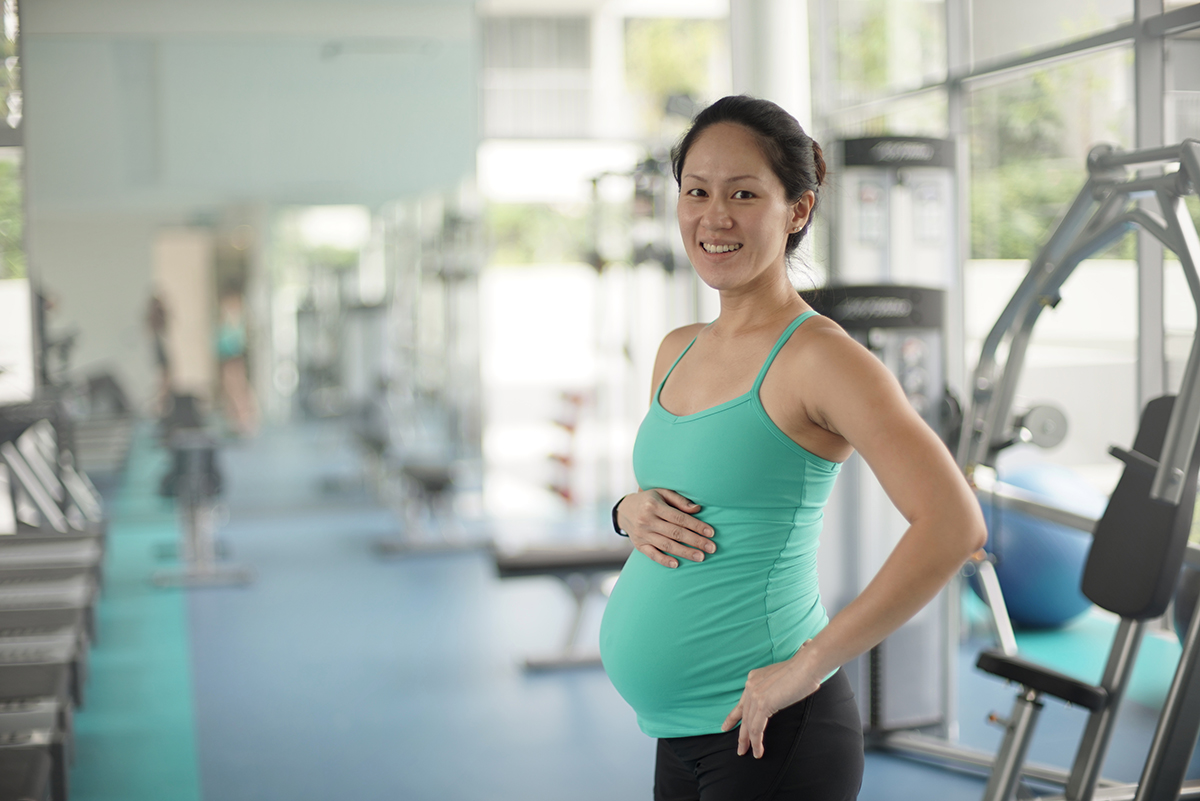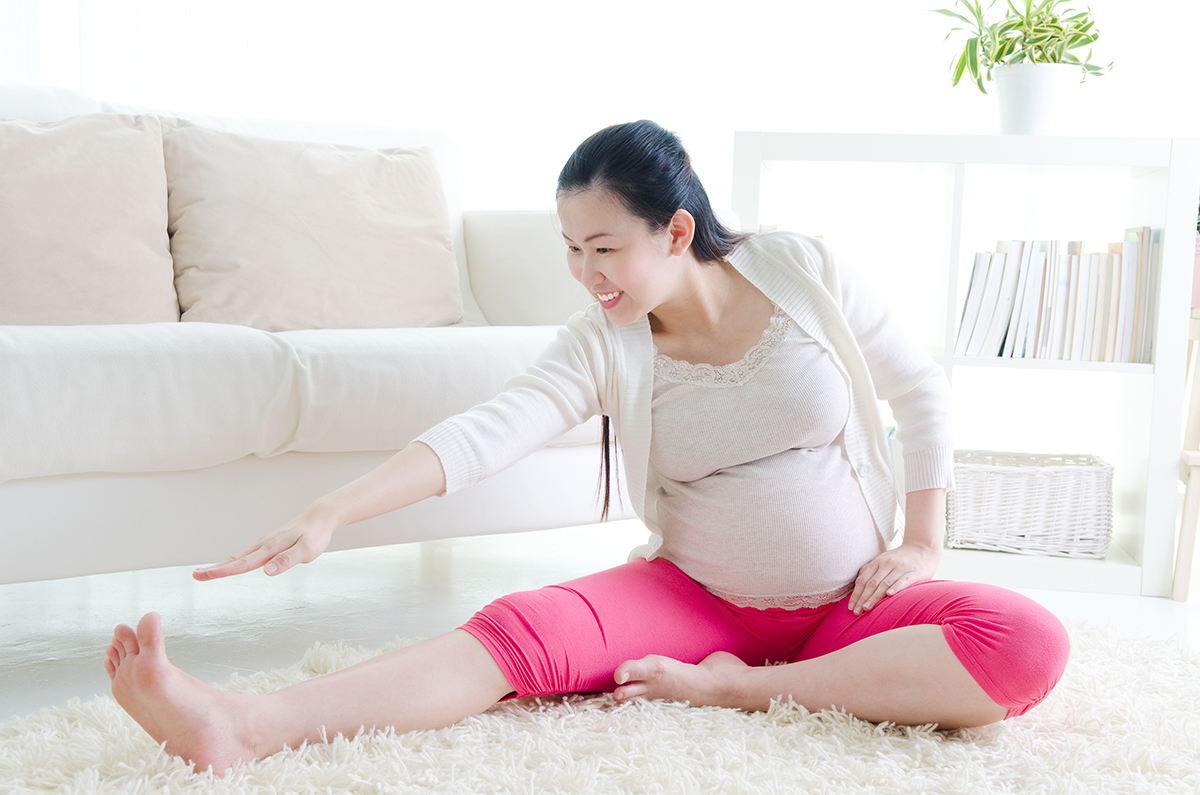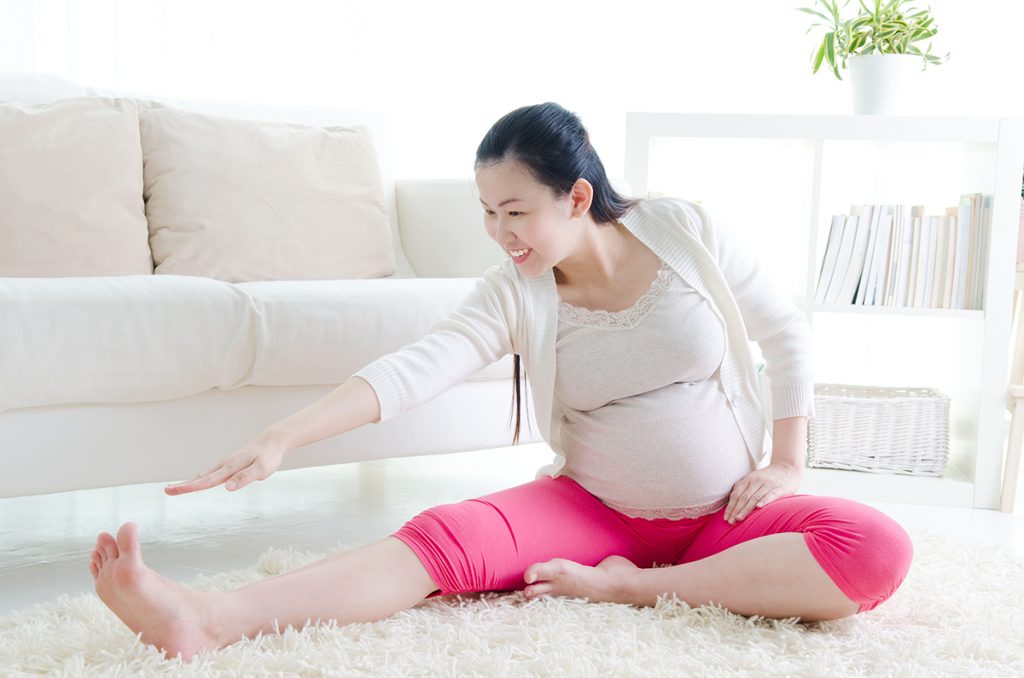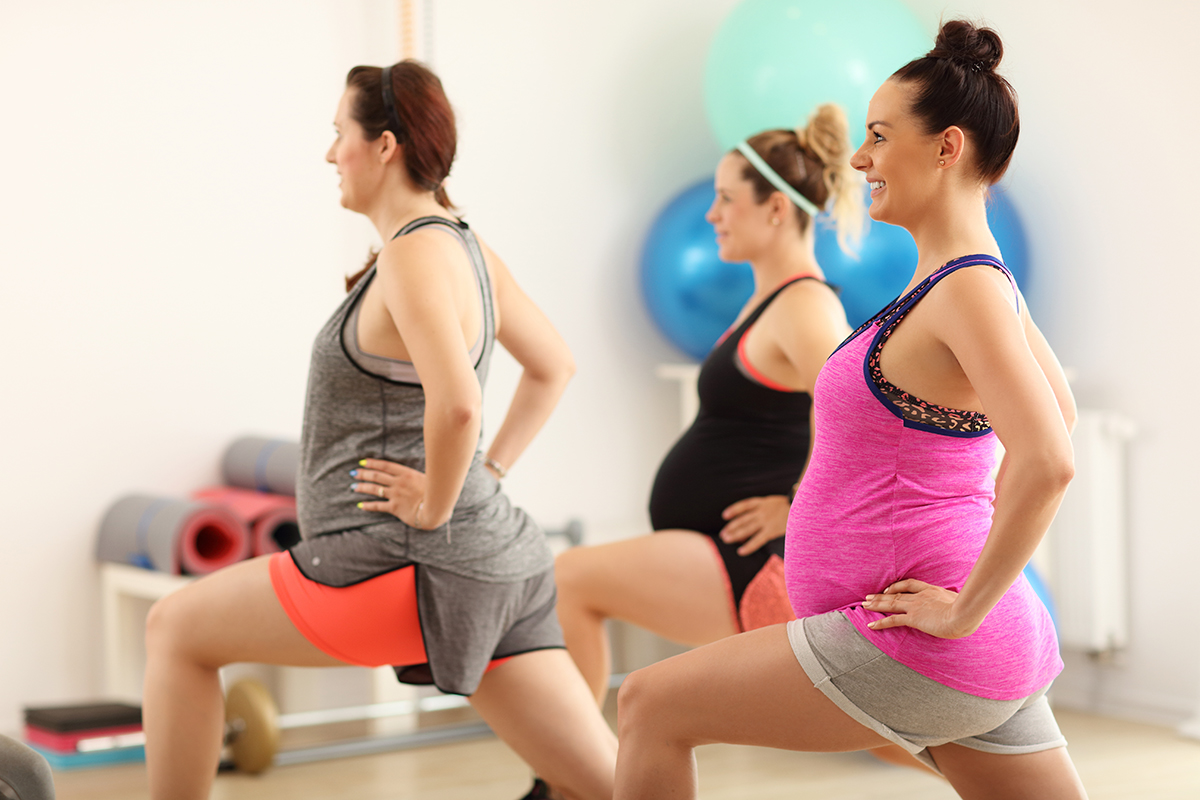Building Strength is an Important Component in a Prenatal Fitness Routine
You may have heard people warn that pregnant women shouldn’t raise anything over their heads or lift objects that are heavier than ten pounds when pregnant. These are warnings that still make the fitness trainer rounds when working with pregnant clients, yet these warnings aren’t based on science. In fact, there’s no evidence for warning pregnant women to avoid lifting over their head unless it causes discomfort or balance issues, and the ten-pound limit is even more questionable, as ten pounds would be too heavy for some women and as easy as a feather for others.

It’s important to always remember that each pregnant woman has a specific fitness level and ability, so setting arbitrary limits is an ineffective way to provide guidelines for this population. In addition, when confronted with statements such as these, always review the research that supports the claim before implementing the information into your training guidelines.
Many women choose to continue their pre-pregnancy strength training program while they are pregnant, and most women may safely start strength training during their pregnancy as long as they are cleared for exercise by their healthcare provider. When developing a pregnant woman’s fitness program, you should take into account her current level of fitness and strength and pay close attention to how she feels during and after exercise. The key to maintaining a safe and effective routine is through consistent modification of the exercises for comfort as pregnancy progresses.
Strength training is an essential prenatal fitness component, providing the muscle power needed to compensate for posture adjustments and weight gain that occurs with pregnancy. Women who continue or even start a strength training routine during pregnancy can help prepare her body for all the lifting done with a new baby and reduce the risk of low back pain. Strength training has not been shown to pose any harm to either the fetus or the mother as long as these general guidelines are followed:
- A gradual reduction in weight loads from pre-pregnancy will likely occur as the pregnancy progresses.
- Women may continue their pre-pregnancy strength training routine (wt/reps/set) as long as they modify the exercises for comfort as pregnancy progresses.
- If training causes muscle soreness during the pregnancy, it is recommended that overload be progressed by increasing the number of repetitions versus the resistance/wt.
- Monitor exercise techniques carefully by mirror observation or supervision in order to correct for progressive postural changes that occur with advancing pregnancy. Improper lifting techniques may aggravate back problems and increase soft tissue injuries.
- Avoid maximal static lifts. They may cause a sudden increase in cardiac output and blood pressure and employ the Valsalva maneuver. During the Valsalva maneuver, there is a significant diversion of blood from the internal organs (such as the uterus) to the working muscles.
- Maximal lifts may also place extreme stress on the lumbar spine and other joint areas. Never overload an unstable or weakened joint.
- Modify supine positions after the first trimester of pregnancy by using an incline board or wedge.
- A strength-training workout involving all the major muscle groups should be performed three times per week, with a rest day between each muscle group training bout.
- Machines, free weights, resistance bands, and body weight
- are all options for building a strength training routine.
- Remind client that she should exhale with the lift and avoid holding her breath or bearing down and straining as she lifts.
- If a particular exercise continues to produces pain or discomfort are modification, it should be discontinued. If pain persists, the client should consult with her healthcare provider.
As always, all pregnant women should check with her healthcare provider before starting or continuing an exercise program during pregnancy.
Catherine Cram, MS started her company, Prenatal and Postpartum Fitness Consulting, in order to provide current, evidence- based guidelines maternal fitness guidelines to health and fitness professionals. She was a contributing author for the textbook, “Women’s Health in Physical Therapy” and co-authored the revision of “Exercising Through Your Pregnancy” with Dr. James Clapp. Her company offers the certification course, “Prenatal and Postpartum Exercise Design” which provides continuing education credits for over 30 health and fitness organization, including ACSM, ACE, ICEA, and Lamaze.








 Although exercise is a positive addition to a healthy pregnancy, there are established guidelines that help ensure that a woman’s exercise program is safe and effective. First and foremost, it is important for a pregnant woman to consult with her healthcare provider before starting any exercise program. She should bring a list of questions regarding her exercise program and provide an overview of what type, intensity, frequency, and duration of exercise she would like to do. This enables her healthcare provider to accurately assess whether the fitness program is appropriate for her pregnancy.
Although exercise is a positive addition to a healthy pregnancy, there are established guidelines that help ensure that a woman’s exercise program is safe and effective. First and foremost, it is important for a pregnant woman to consult with her healthcare provider before starting any exercise program. She should bring a list of questions regarding her exercise program and provide an overview of what type, intensity, frequency, and duration of exercise she would like to do. This enables her healthcare provider to accurately assess whether the fitness program is appropriate for her pregnancy. Self-assessment is one of the best ways for a pregnant woman to monitor her exercise program and assure herself that her activity level is safe. A pregnant woman should review the following questions several times each month and follow up with her healthcare provider if she experiences any problems.
Self-assessment is one of the best ways for a pregnant woman to monitor her exercise program and assure herself that her activity level is safe. A pregnant woman should review the following questions several times each month and follow up with her healthcare provider if she experiences any problems.
